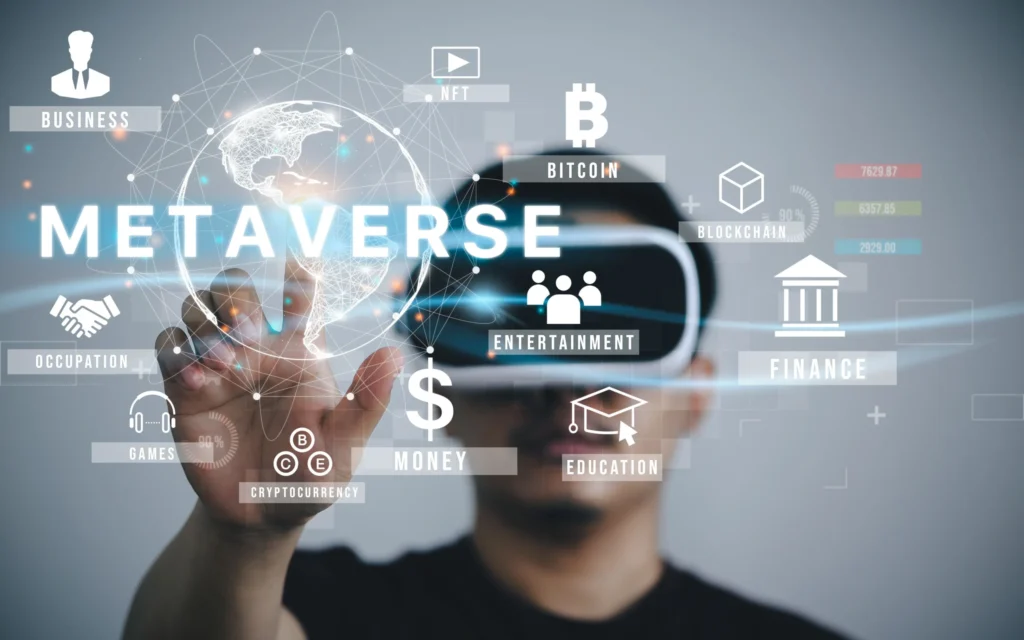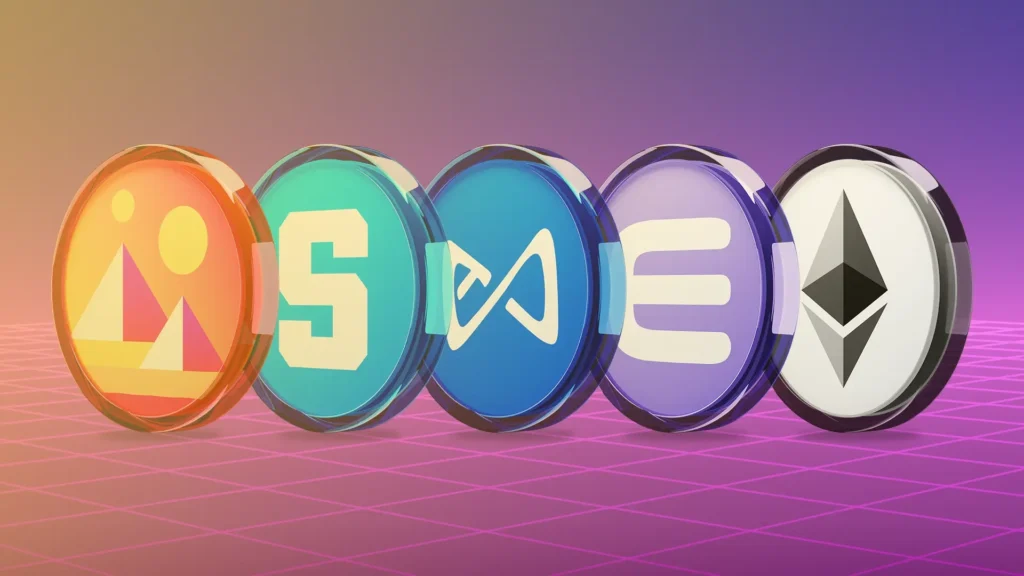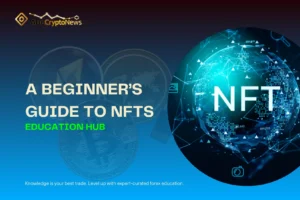Metaverse and Crypto: Exploring the Future of Virtual Economies Through Blockchain
In recent years, the intersection of metaverse and crypto has moved from theoretical buzz to visible development. Virtual worlds once limited to gaming platforms now host real economies powered by blockchain. Digital currencies, NFTs, and decentralized platforms are not just technical jargon — they’re shaping how we work, socialize, and invest in these expanding digital spaces.
While the metaverse evokes images of immersive 3D environments and avatars, its underlying structure is deeply intertwined with blockchain technology. Crypto provides the infrastructure for ownership, security, and value exchange in this emerging ecosystem — the building blocks of an economy that doesn’t exist in physical space.
What Is the Metaverse in Crypto Terms?

Credit from Vection Technologies
The metaverse in crypto refers to immersive digital environments where blockchain-based tools — including cryptocurrencies, NFTs, and smart contracts — allow users to own assets, trade value, and participate in decentralized governance. Unlike traditional online games or platforms, these environments aren’t run by a single company. Instead, they are built on decentralized metaverse platforms such as Decentraland, The Sandbox, or Otherside, where blockchain ensures transparency, security, and interoperability.
A key difference lies in asset control. In a crypto-based metaverse, your avatar’s clothes, the land you buy, or the currency you use are registered on the blockchain — meaning you actually own them, and can transfer or sell them freely.
How Crypto Powers the Metaverse
Crypto serves as both infrastructure and currency in the metaverse. Here’s how:
- Ownership Through NFTs: Non-fungible tokens represent unique items in the metaverse — from digital art to in-game property.
- Currency and Transactions: Metaverse platforms use native metaverse crypto coins or tokens like $MANA (Decentraland) or $SAND (The Sandbox) for buying, selling, or staking.
- Smart Contracts: These self-executing programs manage interactions, such as renting virtual land or running decentralized applications (dApps).
- Governance via DAOs: Many metaverse projects rely on decentralized autonomous organizations where users vote on platform development.
Through this structure, crypto-based virtual economies enable participants to generate income, exchange services, and even build businesses inside digital spaces.
Table: Core Functions of Crypto in the Metaverse
| Function | Description |
|---|---|
| Virtual Currency | Facilitates transactions and rewards within the metaverse |
| NFTs | Represent ownership of digital assets such as land, art, and avatars |
| Smart Contracts | Automate agreements like rentals or ticketing |
| Decentralized Governance | Enables users to vote on platform updates or rule changes |
| Tokenomics | Structures incentives, supply control, and ecosystem sustainability |
Metaverse NFT Integration and Real Estate
Virtual property might seem like science fiction, but it’s become one of the most valuable assets in the metaverse. Digital land parcels are bought and sold as NFTs, with some fetching prices comparable to real-world real estate.
Platforms like Decentraland and Cryptovoxels allow users to build homes, stores, galleries, or even host paid events. Each plot is an NFT, with proof of ownership logged immutably on the blockchain. This innovation has led to new use cases in crypto-based virtual economies, including digital leasing, branded experiences, and metaverse-based retail.
NFTs also extend into wearables, art installations, and access passes — broadening the scope of utility beyond visuals, into functionality and monetization.
Metaverse Tokenomics: Designing Digital Economies
A functioning metaverse needs more than users — it needs an economy. That’s where metaverse tokenomics comes in.
Every platform develops its own model to incentivize engagement, stabilize token supply, and reward long-term participation. Tokenomics covers:
- Supply Cap: Many tokens have a fixed supply to drive scarcity.
- Utility: Tokens may be required to access features, purchase NFTs, or vote in DAOs.
- Rewards: Users might earn tokens by contributing content, staking assets, or completing quests.
These structures are designed not only to power economies but also to prevent inflation or exploitation — a digital counterpart to national monetary policy, executed by code and community.
Crypto Gaming in the Metaverse
Crypto-enabled games are the fastest-growing sector in the metaverse. Known as play-to-earn (P2E) or GameFi, these platforms reward players with tokens for in-game activity, which can be traded or used elsewhere in the metaverse.
Examples include:
- Axie Infinity: Players collect and battle creatures called Axies, earning $SLP and $AXS tokens.
- Illuvium: A high-fidelity, open-world RPG built on Ethereum where every asset is tokenized.
- Big Time or Star Atlas: Games with real economies, NFT marketplaces, and governance roles.
This gamified approach doesn’t just offer entertainment — it provides income opportunities, particularly in regions where traditional jobs are less accessible.
Web3 Metaverse and Cryptos Synergy
Web3 is often defined by decentralization, user ownership, and transparent protocols — all of which the metaverse relies on. The synergy of Web3 metaverse and crypto enables users to:
- Control their digital identities
- Move assets between platforms
- Use one wallet to interact across apps and games
Wallets such as MetaMask or Phantom act as passports to the metaverse. They hold metaverse crypto tokens, NFTs, and credentials that can be authenticated across dApps. This interoperability is essential for realizing the vision of a unified, user-controlled virtual space.
How to Invest in Metaverse Crypto
Interest in the metaverse has translated into investment opportunities — from buying tokens to acquiring land or NFTs.
Ways to invest include:
- Token Purchases: Buying coins like $MANA, $SAND, or $APE through exchanges
- Virtual Real Estate: Purchasing NFT land on platforms like Decentraland or The Sandbox
- NFT Assets: Acquiring valuable avatars, wearables, or game items
- Metaverse Startups: Participating in token launches or DAO projects
However, this space remains volatile. As with any crypto asset, due diligence is essential. Not all metaverse coins have utility, and some projects may lack long-term viability.
Top Metaverse Crypto Projects to Watch

Credit from Token Metrics
A few blockchain-based virtual worlds have gained prominence:
- Decentraland (MANA): One of the first fully decentralized virtual environments
- The Sandbox (SAND): Focused on gaming and creator tools
- Otherside (APE): Yuga Labs’ metaverse tied to the Bored Ape NFT ecosystem
- Somnium Space: A VR-focused platform with on-chain land ownership
- Voxels (formerly Cryptovoxels): A lightweight, creative metaverse with live building tools
These projects demonstrate varying visions — from community-driven art hubs to structured, game-like worlds — but all leverage blockchain in the metaverse to enable ownership and exchange.
The Future of Metaverse and Cryptos
While some see the metaverse as hype, its infrastructure continues to grow — especially in tandem with blockchain. In the future, expect deeper integration of AI, spatial computing, and interoperable wallets, enabling more fluid movement between virtual and physical lives.
Challenges remain: regulatory clarity, environmental concerns, and user onboarding. Yet the convergence of metaverse and crypto continues to offer possibilities — for creators, gamers, investors, and everyday users.
Just as social media reshaped communication, the metaverse and crypto may redefine how we participate in digital society — through ownership, decentralization, and immersive interaction.




